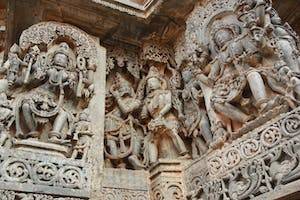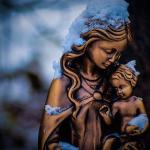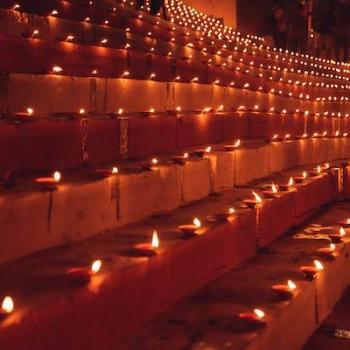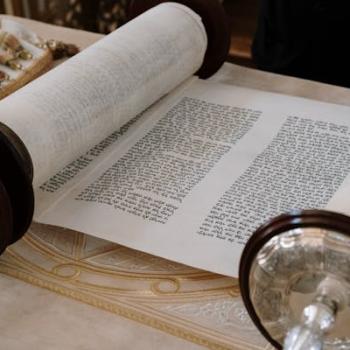
THE RELIGION GUY’S ANSWER:
A bill sponsored by a Muslim legislator and passed by California’s Senate May 11 would make this the first U,S. state to add “caste” to the categories of illegal discrimination under civil rights laws. The bill defines caste as “a system of social stratification on the basis of inherited status” that involves “socially enforced restrictions on marriage, private and public segregation” and “social exclusion on the basis of perceived status.” Action on the bill by California’s state Assembly is pending. Earlier this year, Seattle became the first U.S. city to enact a parallel statute.
As of 2022, the 23 campuses of the California State University system likewise banned caste discrimination. Other campuses with such policies include the University of California campus at Davis and California’s Claremont colleges as well as Brandeis University, Brown University, Carleton University, Colby College, Colorado College, and Harvard University, with others expected to join this new movement.
Intense immigrant divisions
Caste is well-known for close association with Hinduism, whose billion followers make it the world’s third-largest religion behind Christianity and Islam. California’s actions have roused intense divisions among immigrants from India, with some telling legislators about incidents when they suffered from caste bias. A 2018 report by the anti-caste Equality Labs found 67% of Indian-Americans from low-status groups felt they were treated unfairly at work.
But groups such as the Hindu American Foundation contend that the bill itself “will perpetuate racist European stereotypes and misconceptions” and rouse discrimination against Hindus. Some deny that caste is any core tenet of the Hindu religion, if properly understood, or say that British colonial rule exaggerated and exploited the system.
Because the Hindu connection has become so controversial, in what follows The Guy will provide information from three standard scholarly resources, www.britannica.com, “The Encyclopedia of Religion,” and “The HarperCollins Dictionary of Religion” written by members of the American Academy of Religion.
Status determined at birth
The caste system occurs generally in South Asian culture and affects various faith groups, but is found particularly in India and among Hindus. The system involves hierarchical ranks, often linked with occupations, determined by a person’s ancestors and status at birth. Marriages within one’s group are usually mandatory and arranged by the family. Social segregation and exclusion are typical results, for instance shunning of shared food or drink across caste lines. The family surname usually identifies a person by caste.
“Caste” is not actually a Hindu term but originated with 16th Century settlers from Portugal. Within Hinduism, the more accurate terms are Varnas, for the four basic classes defined by occupation, and Jatis, for the complex network of hundreds of social subdivisions that vary by region.
Key text from Hindu Scripture
A foundational text in Hindu scripture is from the Rig Veda (Book 10, 90:12) written roughly in the same epoch as biblical Moses if not earlier. It underlies the Varna hierarchy in traditional society. In this hymn, Purusha, the cosmic man, is dismembered in a primordial sacrifice. His mouth became the Brahmins (priests and teachers), his arms the Kshatriyas (warriors and officials), his thighs the Vaishyas (peasant farmers and merchants) and his feet the Shudras (common laborers and servants).
People who were not included in those classes were outside caste, or “untouchables,” consigned to degrading jobs such as those requiring contact with dead bodies or bodily emissions. Those in this level became known in modern times as the Harijan (“children of God”) and now refer to themselves as the Dalit (“broken” or “scattered”) and labeled for official purposes in India as the “Scheduled Classes.” Ethnic minorities that are outside caste are called the “Scheduled Tribes.” Finally, there are the Other Backward Classes and Most Backward Classes.
Caste in turn is linked with Hinduism’s belief in Samsara, each soul’s many repeated cycles of birth, life and death defined by the law of Karma. By this tenet, an individual is born into a species or a level in human society on the basis of accumulated good and bad deeds in previous lives.
After India won independence from British rule, its new constitution outlawed “untouchability” and caste discrimination. The nation later established special aid programs for those with low inherited status.
Everyday realities in India
What does this mean in terms of the everyday realities of Indian society? America’s Pew Research Center, which is especially adept at surveys about religion, issued a major report on India in 2021, posted here. www.pewresearch.org/religion/2021/06/29/religion-in-india-tolerance-and-segregation// The team conducted face-to-face interviews with 29,999 Indians, of whom 22,975 were Hindus, living in 29 states and territories. Here are highlights from the chapter on caste in the resulting 232-page report.
The Pew report said “nearly all Indians today identify with a caste,” even those who are not Hindu. Among India’s Hindus, 71% belong to the low castes or tribes. How does caste affect daily life among Hindus? In the past year, 15% said, they “personally felt discriminated against” because of their caste. Among men, 63% said it’s “very important” to prevent marriages between castes, and 64% among women. On the other hand, 72% of Hindus said they’d accept a Scheduled Caste family as a neighbor.
An interesting sidelight on this topic is the 2020 book “Caste: The Origins of our Discontents” by Isabel Wilkerson, which was lauded by Presidents Bill Clinton and Barack Obama, and recommended by Oprah Winfrey for her book club.
This analysis presents caste as a hierarchical culture that has persisted for centuries and is a better explanation of society than the interrelated factor of race. Wilkerson says people are ranked as superior or inferior on the basis of heritage, religion, economic status and personal characteristics, with race as a prop for caste. She depicts three historical examples: India, Germany under Nazi rule, and the American South (but not, for some reason, the apartheid era in South Africa).











